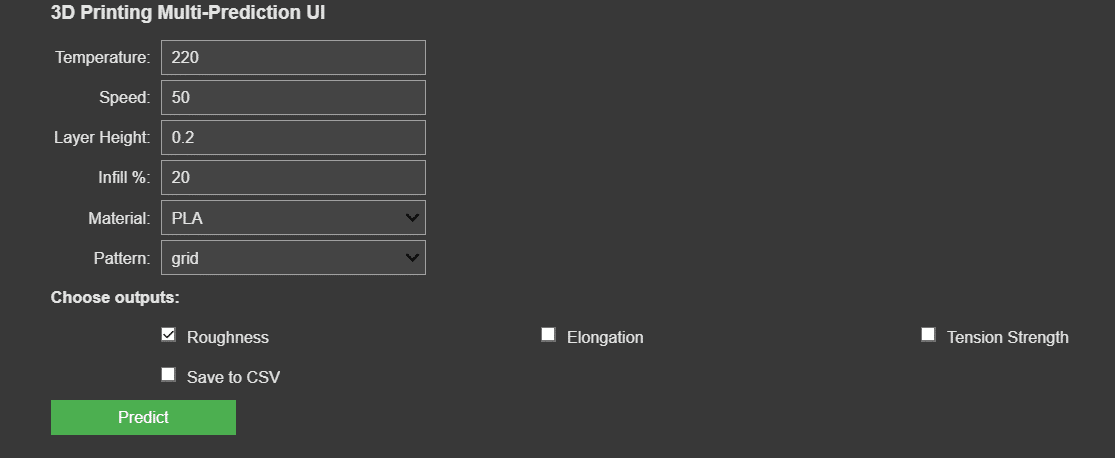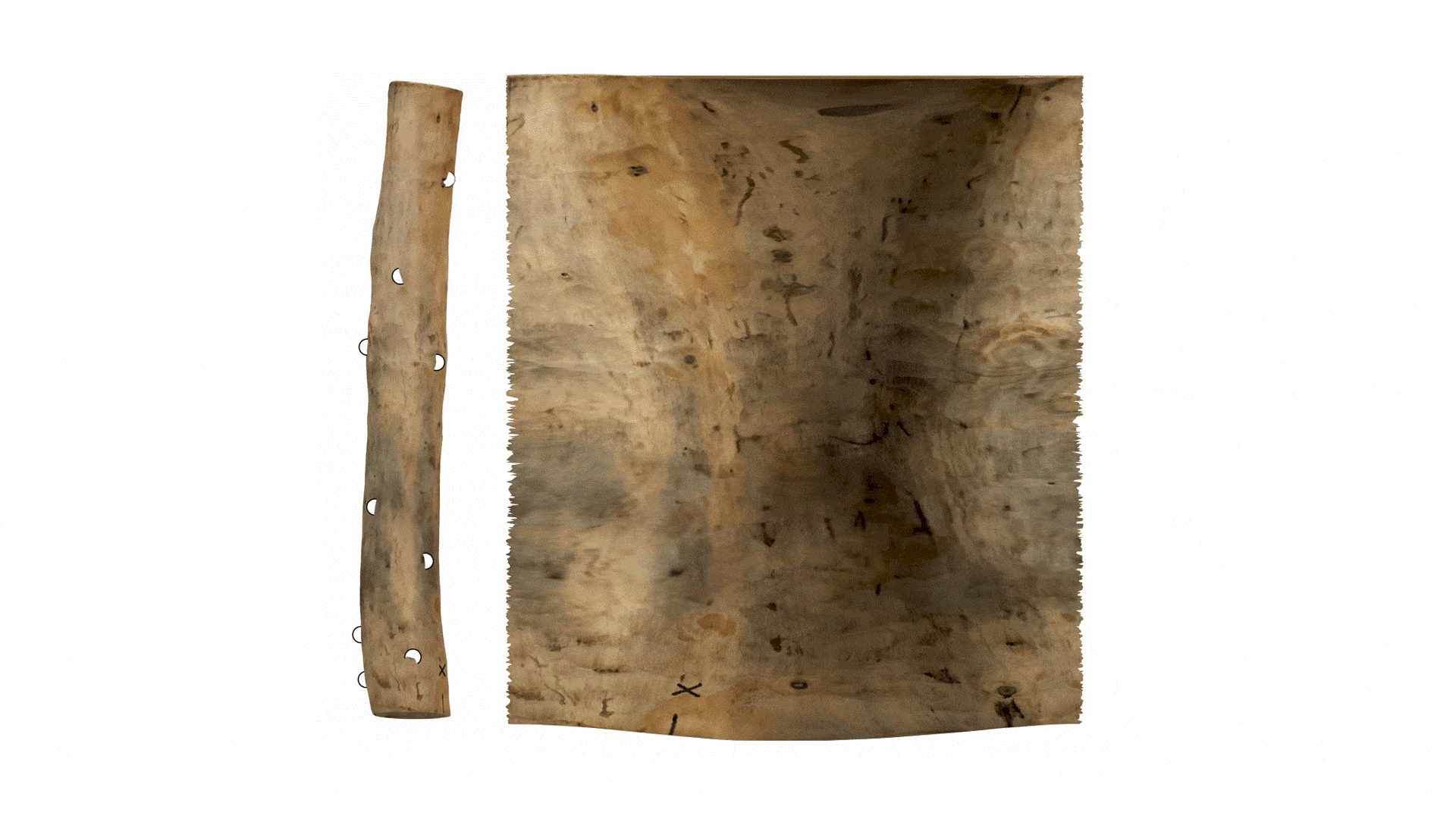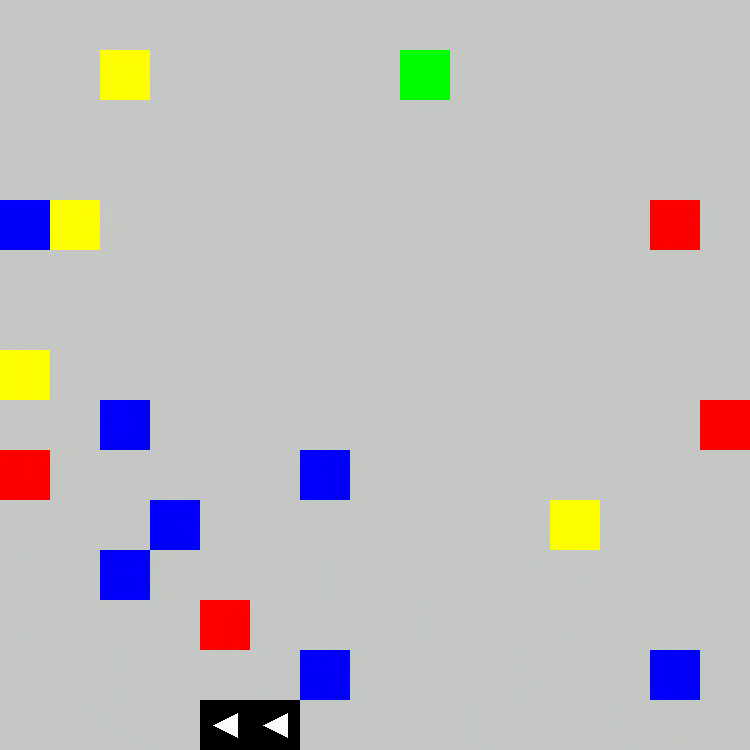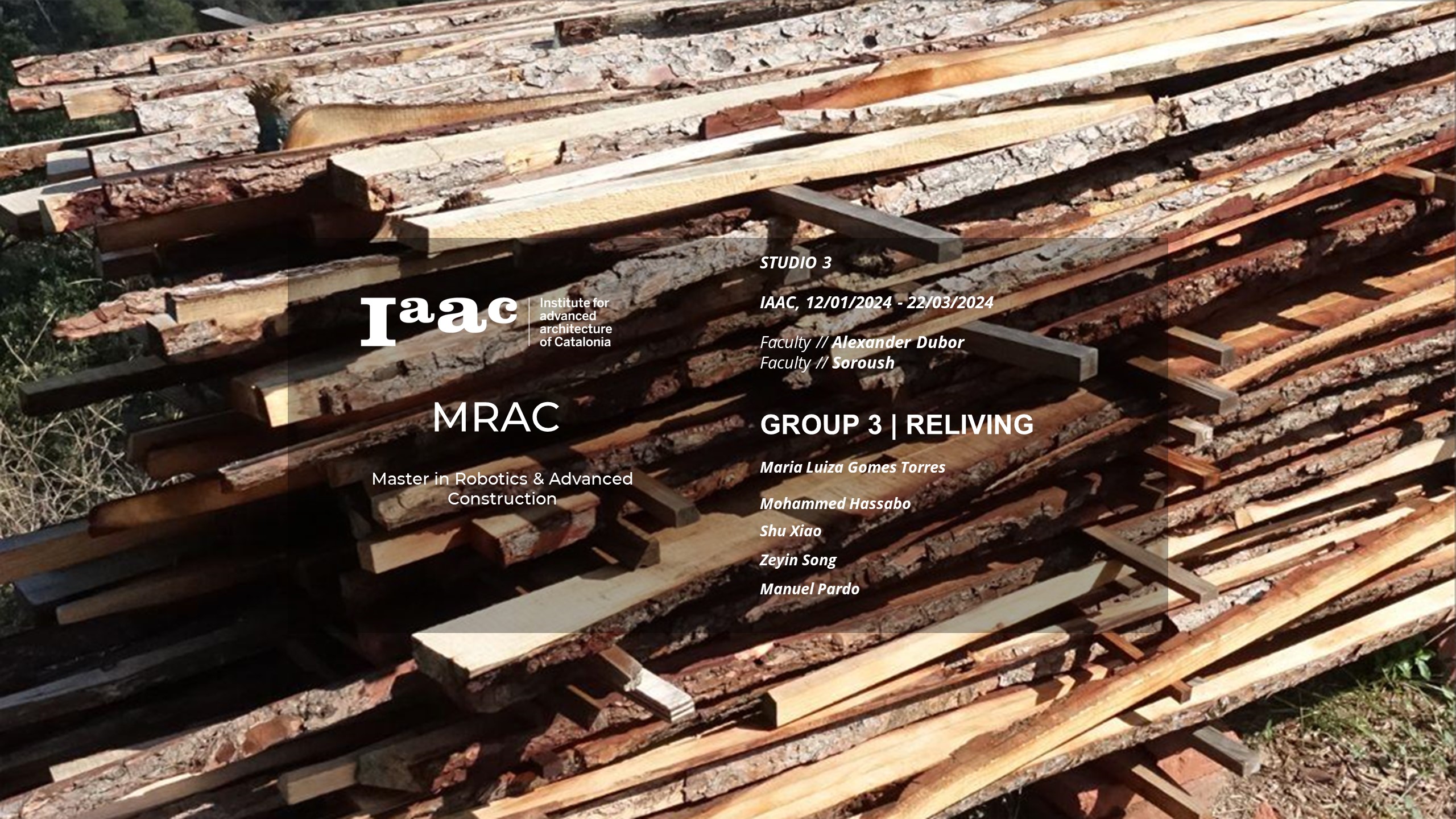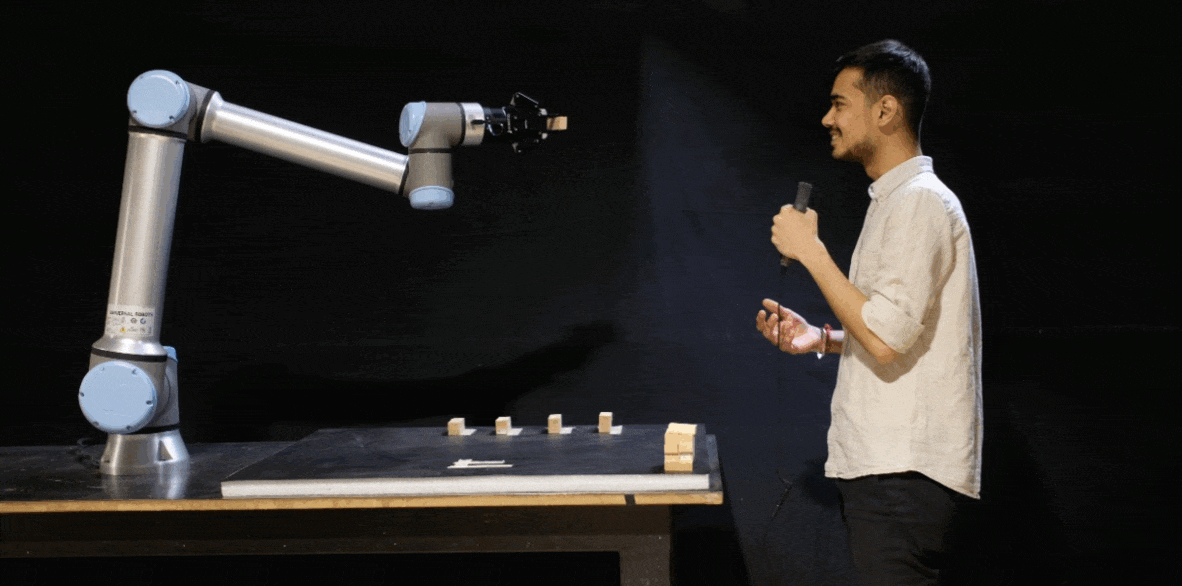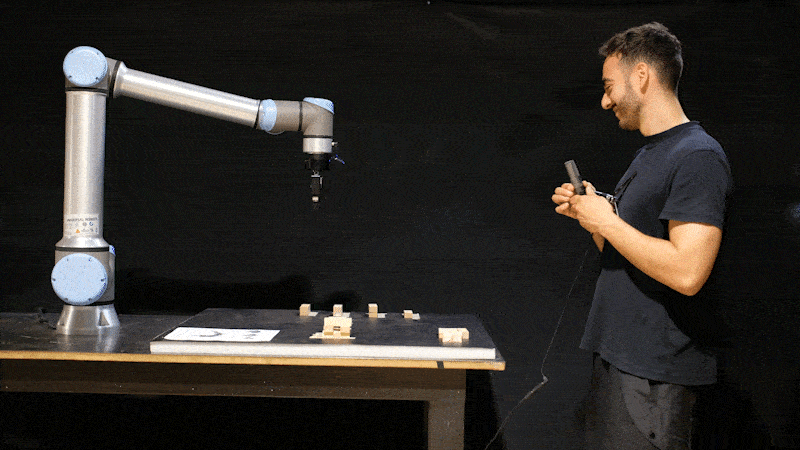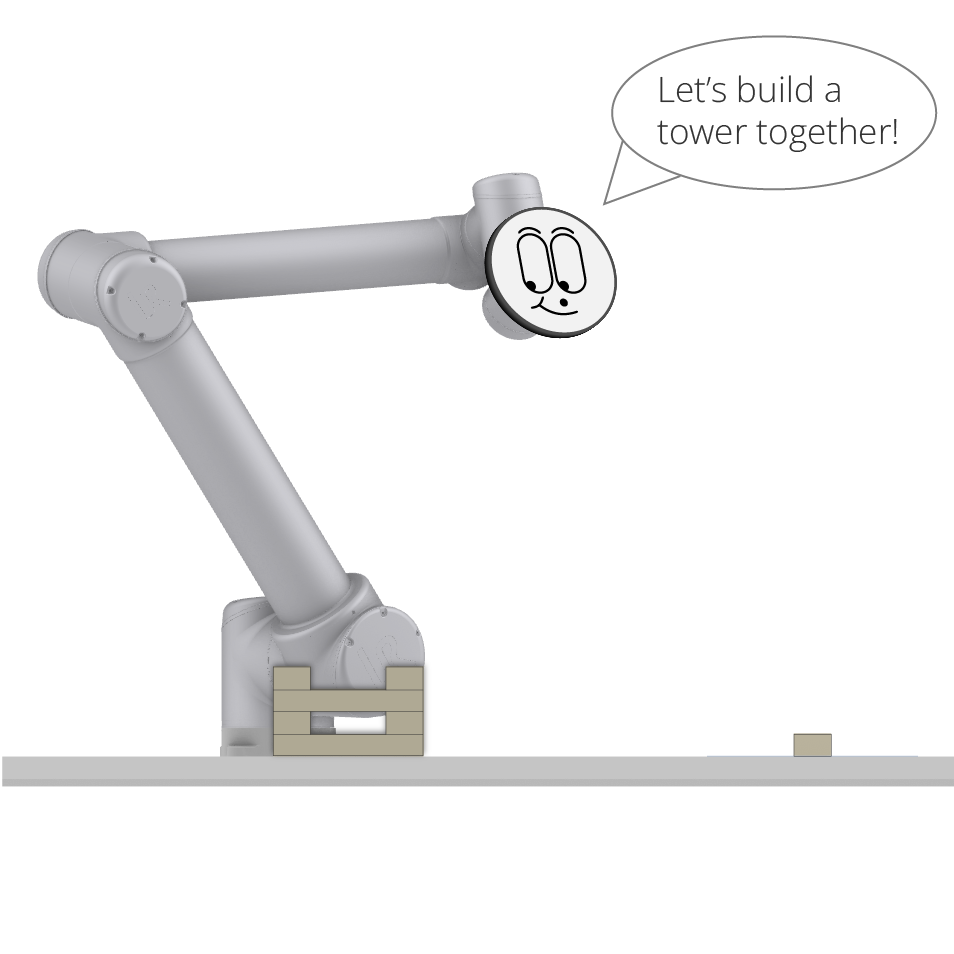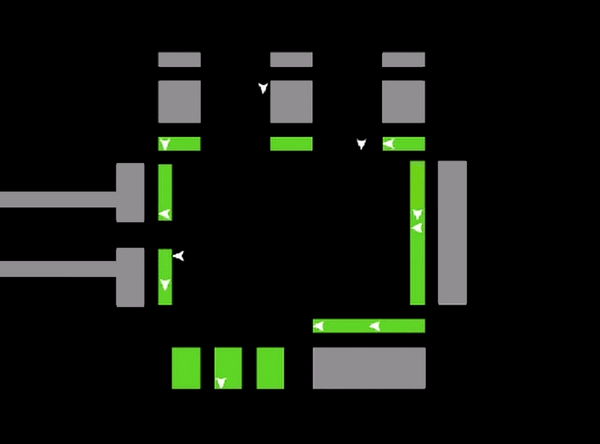The Master Programme in Robotics and Advanced Construction is an innovative educational format that offers interdisciplinary skills and understanding through a series of class seminars that are put into practice through hands-on workshops. IAAC gives students the opportunity to create individual studio agendas and develop Pilot Thesis Projects based on the knowledge acquired during the seminars and workshops split into 3 Modules. In this way, IAAC puts together an experimental learning environment for the training of professionals with both theoretical and practical responses to the increasing complexity of the construction sector.
Software III : 3D-Printing Prediction System with Machine Learning.
[ 1 ] FIRST QUESTIONS : The application of Machine Learning (ML) to the prediction of 3D printing parameters presents a challenge that necessitates a structured approach and raises many questions on how to approach this combination. To effectively explore this integration, it is essential to address three core questions: What are the process and the … Read more
Software III _ UN_LOG FACTORY
Github : https://github.com/Clarrainl/UN_LOG-Factory | INTRODUCTION | Detecting wood defects in 3D-scanned logs using Machine Learning In the timber industry, a significant portion of wood gets discarded due to irregularities or defects that make it unusable under standard practices. However, many of these logs can still be used creatively or structurally if properly understood and classified. This project … Read more
Reinforcement Learning for Robot Obstacle Avoidance
adapted from IaaC´s Artificial Intelligence Program’s study of machine learning for robotic pick and place. (https://blog.iaac.net/reinforcement-learning-for-robotic-pick-and-place/research). Github Repository. https://github.com/LaurenD66/ROS-GridWorld-RL-with-Obstacles In a recent study by IaaC´s Artificial Intelligence Program, students used reinforcement learning models to train an (robotic) agent to move through a space defined by a simple grid from an origin to a goal, while … Read more
Timber Narratives
Building on the principles of disassembly explored last semester, this phase of the Timber Narratives project delves deeper into advanced data-driven design strategies. We now capture and utilize timber colour values through enhanced scanning technologies, integrating this data into our designs. Additionally, we’ve implemented machine learning with logistic regression for precise categorization of timber for … Read more
ReWeave_3.0
Abstract: The ReWeave project develops a robotic system to repurpose construction and demolition (C&D) waste into functional, attractive walls, enhancing human-robot collaboration. We created a database by scanning broken tiles to extract shape, size, and color information, then developed custom nesting algorithms to optimize tile arrangement. The workflow includes scanning tiles, exporting outlines via ROS, … Read more
Glazing Virtuoso
Introduction Glazing Virtuoso marks a pivotal shift in the spray glazing industry, where craftsmanship meets cutting-edge robotics to usher in a new era of creative expression and manufacturing precision. This project enhances creative workflows by seamlessly integrating intricate spray glazing techniques, that would blend in traditional artisanal craft empowering artists with unprecedented control that could … Read more
RELIVING
State of the Art and Minimum Value Proposition There is an overstocking of small to medium trees over Europe due to poor firing and soil cultivation conditions, most of this trees have the diameter of 10-25 cm and depending on the species and cultivation conditions some of then are crooked and can’t be used by … Read more
Robot of Babel
नमस्ते – مرحبًا – OLÁ – HOLÁ AIM Our aim is to make Human Robot Collaboration accessible to a variety of users via different languages by developing a speech to toolpath interface. RELEVANCE METHOD Workflow As the participant enters the room, they are greeted by a robot with a friendly waving motion. The participant can … Read more
#Being_Humane
What if you can control your Cobot with only hand gestures and you can work effortlessly? That’s what we came up with this experiment of using Multi agent systems to control the engagement of a collaborative robot (ur10e).Our workshop highlights an innovative approach to controlling cobots using hand gestures. This method aims to facilitate effortless … Read more
BLABBER BOT
Building Together, One Word at a Time AIM The aim of this project is to enhance human-robot collaboration through the development of a user-friendly system that creates an inclusive environment. Text-to-speech (TTS) and speech-to-text (STT) systems enable humans and robots to communicate in anintuitive and engaging way. Relevance One major issue was that the human … Read more
Hey Jarvis, let’s Collaborate!
This project explores a framework for Human-Robot Collaboration (HRC) and behavioural fabrication, focusing on constructing a Jenga-like tower using small timber blocks. Using the Agent-Based Modeling system (ABxM) from the Institute for Computational Design and Construction (ICD), a communication network was established integrating a human participant, a computer vision system, and an interactive audio interface. … Read more
ReWeave_3.0_Gamified
Abstract The escalating challenge of managing construction and demolition waste necessitates innovative approaches to enhance sustainability in the construction industry. This research proposes an automated robotic workflow leveraging Multi Agent Systems (MAS) and computer vision to repurpose planar construction waste materials, such as tiles, into new construction elements like bricks or walls. The primary objective … Read more
Agent-based Manufacturing System
Industry Setup Relevance: ABMS could be a twist on traditional manufacturing by using software agents to control different parts of the process. Imagine a factory where machines, workstations, and even software programs aren’t just following instructions but can somewhat act and decide independently. This helps in faster problem-solving mechanisms and could help reduce human intervention … Read more
Factory Floor: Automating Raw Wood Panels
The aim of this Seminar was to imagine a scenario where the Studio Project could be imagined on an industry floor with full automation. In order to understand the workflow and position of each station to fabricate a facade made from raw edge sticks an an agent based system was sketched as diagrams in order … Read more
Glazing Smart Factory
Our course aims to explore the complexities of automated collaborative multi-agent systems across various environments. To achieve this, our focus lies on implementing a solution for our studio project: robotic glazing. Our objective is to address a hypothetical scenario wherein we aim to upscale the glazing process while retaining the adaptability necessary for mass customization. … Read more


